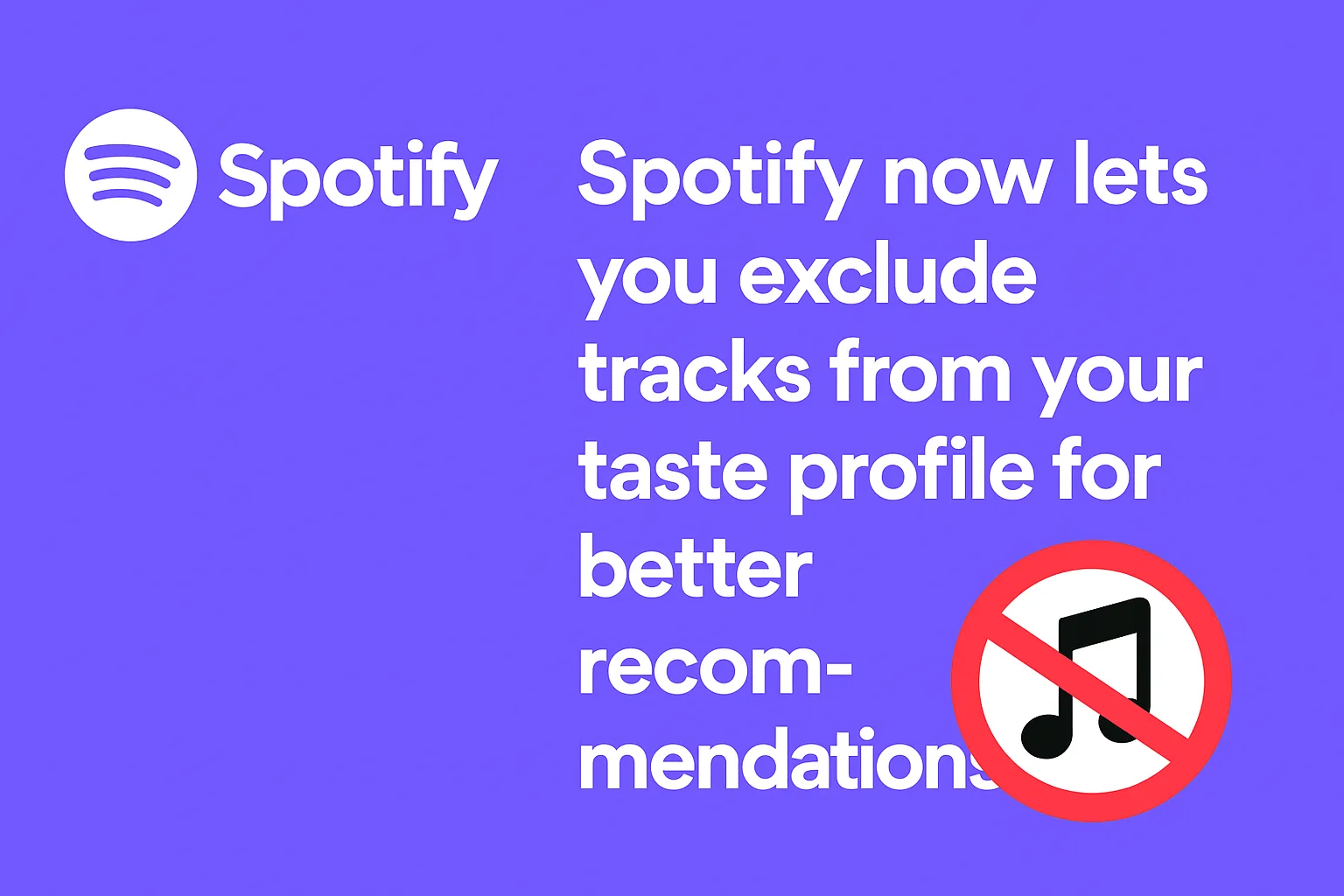Table of Contents
Spotify’s Taste Profile Update Changes How Recommendations Work
Spotify has introduced a new feature that allows listeners to exclude specific songs from their taste profile, a move that could reshape how people experience music recommendations. At Squaredtech, we view this update as an important step in giving users direct control over their digital listening environment. For years, Spotify has used its recommendation system to keep people engaged with playlists like Discover Weekly, Daily Mixes, and the annual Spotify Wrapped. But until now, users had limited tools to prevent unwanted songs from influencing those playlists.
The taste profile is Spotify’s internal representation of a listener’s musical preferences. This profile powers nearly every part of the app, from algorithm-driven playlists to what appears on the Home page. It even shapes social features such as Blend playlists that combine your taste with a friend’s. Previously, users could exclude playlists, such as sleep mixes or study tracks, from influencing their recommendations. However, this approach did not fully solve the problem. A few accidental plays or background sessions could still distort Spotify’s understanding of your preferences.
This new feature goes further. It allows individuals to actively remove single tracks from shaping future recommendations. By refining the taste profile at the song level, Spotify ensures that its recommendations remain more accurate and more personal. For users frustrated by random songs interfering with their Wrapped summary or their Discover Weekly playlist, this represents a practical improvement. Squaredtech believes this addition reflects Spotify’s recognition that personalization needs flexibility, not rigid algorithmic assumptions.
Read More About Our Article of 5 Apps You Should Use Instead of Spotify – The Best Spotify Alternatives Tested Published on October 1st, 2025 SquaredTech
Why Excluding Tracks Matters for Everyday Listeners
Spotify has always promoted its hyperpersonalization as a core selling point. The company invests heavily in algorithms that analyze listening habits, detect patterns, and predict what music a listener might enjoy next. Yet personalization has limits. Real-life scenarios often expose the weaknesses of a one-size-fits-all model.
Consider a parent who shares their account with children. Kids’ music can quickly dominate recommendations, resulting in a Spotify Wrapped full of cartoon theme songs instead of favorite artists. Families with smart speakers face a similar issue, as one account often becomes the default for everyone in the household. Shared listening in the car can also distort a taste profile. When friends take turns playing DJ, their choices might influence the system in unintended ways.
The ability to exclude tracks directly addresses these situations. A parent can quickly remove a children’s song from influencing their Wrapped results. Someone who lent their account to a friend during a road trip can eliminate the impact of a completely different genre. Even casual mistakes, such as accidentally playing a track multiple times, can now be corrected with a few taps.
We recognize that digital personalization must reflect the complexity of human life. Algorithms cannot always distinguish between intentional and unintentional listening, but manual exclusion gives users agency. This feature turns passive recommendation systems into something more interactive, bridging the gap between automation and user choice.
How the Exclude Feature Works and What Could Come Next
Spotify has made the process simple for both free and premium users. By tapping the three dots in the top-right corner while viewing a track, listeners can choose to exclude it from their taste profile. The same menu also lets users reinstate a previously excluded song. This design ensures the feature remains accessible without overcomplicating the app’s interface.
However, We see this as only a partial solution. While useful, excluding songs one by one is still time-consuming. Many listening sessions involve dozens of tracks, especially during family gatherings or group activities. A more advanced option could let users label an entire session as belonging to a different profile. For example, a parent could tell Spotify, “This is for the kids,” and automatically prevent all those tracks from affecting their recommendations. Voice commands could play an important role in this future vision, particularly for drivers who cannot navigate menus safely while on the road.
Until such innovations arrive, the current exclude function offers a meaningful level of control. It prevents the most obvious distortions in recommendation accuracy. It also helps preserve the integrity of Spotify Wrapped, a feature many users eagerly await each year. We believe Wrapped has become more than a playlist recap. It is a cultural event where people share their results with friends and social networks. By offering tools to protect Wrapped from unwanted interference, Spotify acknowledges how important this feature is for personal identity and digital expression.
What This Means for Spotify Users and the Future of Recommendations
Spotify’s decision to allow users to exclude tracks from their taste profile reflects a broader trend in digital services. Personalization is no longer only about algorithms predicting behavior. It now requires meaningful input from users themselves. Services that blend machine learning with user control create better outcomes.
For everyday listeners, the impact will be immediate. Recommendations will become more accurate. Wrapped will feel more authentic. Families will spend less time fighting algorithm quirks. And casual listeners will avoid having one offbeat track dominate their playlists.
Squaredtech views this as part of a larger conversation about digital agency. As streaming platforms continue to expand, users will expect more ways to refine their experiences. The balance between automation and control will define the next generation of recommendation systems. Spotify’s exclude feature is a small but powerful sign of where things are heading.
Read More About Our Article of Spotify’s AI Playlist Feature Now Hits Asia — See How It Picks Songs from Just a Text Published on April 25th, 2025 SquaredTech
Stay Updated: Mobile


